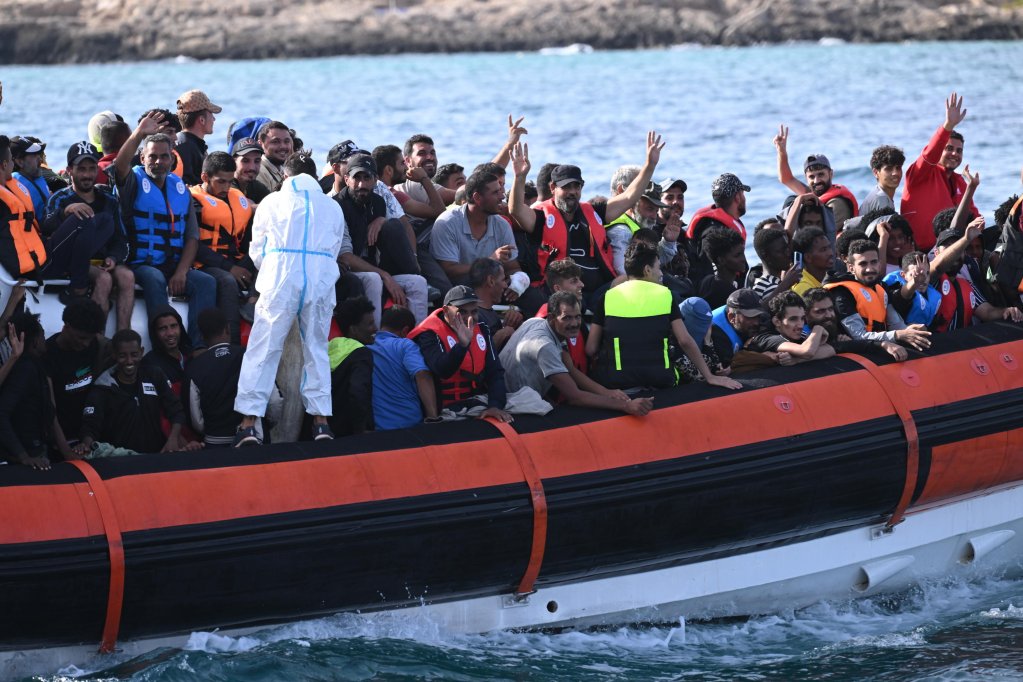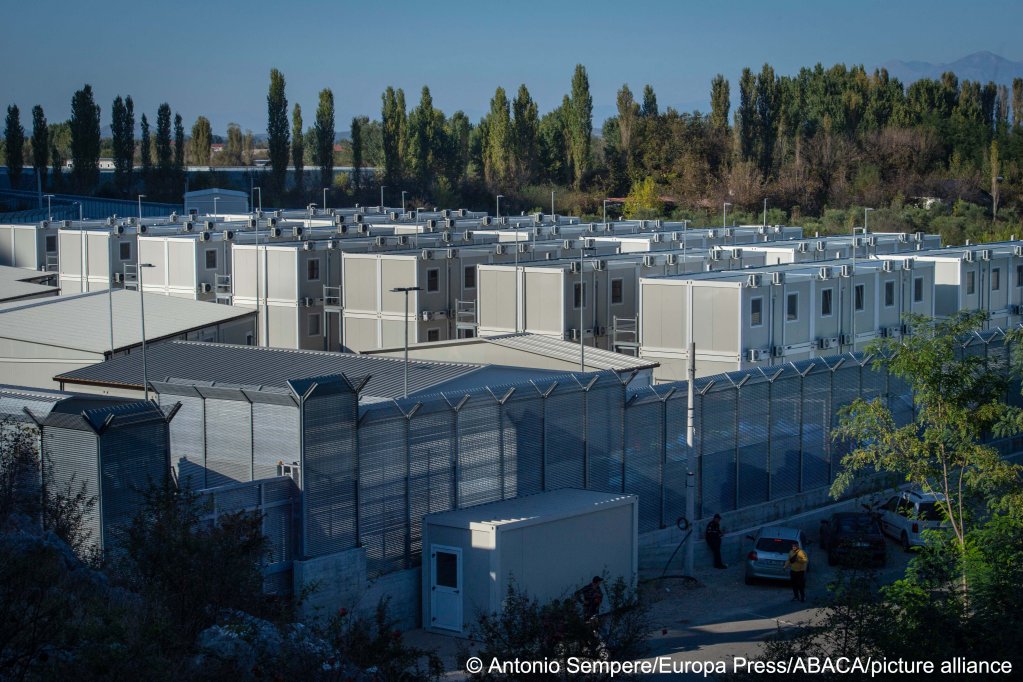Italy is embarking on a third attempt to send a group of migrants to Albania. Under the Italy-Albania deal, adult male asylum seekers rescued in international waters, could be sent to reception centers in Albania where they would wait for their asylum claims to be processed.
After a two–month pause, Italy has resumed sending migrants to detention centers in Albania. An Italian patrol vessel, carrying an estimated 49 people picked up in international waters, set off for Albania on (January 26), news agency Agence France Presse reported.
On Tuesday, (January 28), it arrived at the Albanian port of Shengjin, reported the news agency Associated Press (AP). This time, the Italian authorities haven't specified the nationalities of those on board. However, Italian media are reporting they may be from Bangladesh, Egypt, Ivory Coast and Gambia.
According to media reports, the group of 49 was selected from different groups rescued by the Italian authorities following a screening of their eligibility to be processed in Albania.
Another group of about 53 people was also reported to have been picked up in international waters and had presented their passports to avoid immediate relocation to Albania. This group is said to be in Italy awaiting the verification of their status.
Controversial detention centers
The transfer to Albania represents a third attempt by the Italian government to enforce its policy to outsource its immigration and asylum processes to Albania, a non-European Union (EU) country. While the Albanian reception centers are a cornerstone of the current Italian government and its hardline stance on irregular arrivals into Italy, the reception centers are mired in controversy.
Italy's move to begin sending asylum seekers to Albania in October and then November were blocked last year by Italian judges who refused to validate the detention of the first two small groups, men from Bangladesh and Egypt, and instead referred their cases to the European Court of Justice.
The ECJ had earlier established that a person seeking asylum could not be repatriated to their country if even a portion of it was deemed unsafe for return.
The ruling undermined Rome's earlier position to deport people from a list of 19 "safe" countries of origin that included Bangladesh and Egypt. The European court is set to review Italy's plan in the coming weeks and determine whether it complies with EU law.

Following a visit to the Albania site facilities last year, the Associazione Per Gli Studi Giuridici Sull'Immigrazione (ASGI), a group of independent lawyers and scholars focused on migrant rights, raised concerns about safeguarding the needs of vulnerable people given the outlined procedures of assessing the needs of people while at sea, immediately after they are rescued.
"it is practically impossible to carry out a screening with respect to the identification of all vulnerabilities at the same time as rescue at sea ... Despite knowing that asylum seekers with special needs should be brought to Italy, it is already assumed that it will be impossible to identify them before disembarking in Shengjin," ASGI wrote in their report.
Read Also
A look inside the new Italian reception centers in Albania
A possible model for managing migration
Under the Italy - Albania scheme, which was announced in 2023, adult male asylum seekers could be sent to Albania where they would be processed in two Italian–run centers. Their first stop is at the port city of Shengjin for screening and processing. From there, they would be housed in accommodation facilities in the smaller city of Gjader where they would wait for a decision on their asylum claim. Those whose asylum applications have been rejected and are awaiting deportation would also be housed in Gjader.

The five-year deal, with an estimated price tag of 670 million euros ($730 million) would allow for about 3,000 people per month to be housed in the Italian-built reception centers.
While the Italy-Albania deal has been mired in controversy, it is also seen as a litmus test for migration and asylum in the European bloc. Amid a rising anti-immigration sentiments, several European leaders have expressed interest in exploring how the Italy-Albania deal could become a model for managing migrants outside of EU territory.
Read Also
Italy: Meloni vows to continue with Albania plan despite empty centers
This article was updated on January 28 to reflect reporting that the ship had arrived in Albania, and to add the possible nationalities of those on board. A current photo was also added for the main picture.
